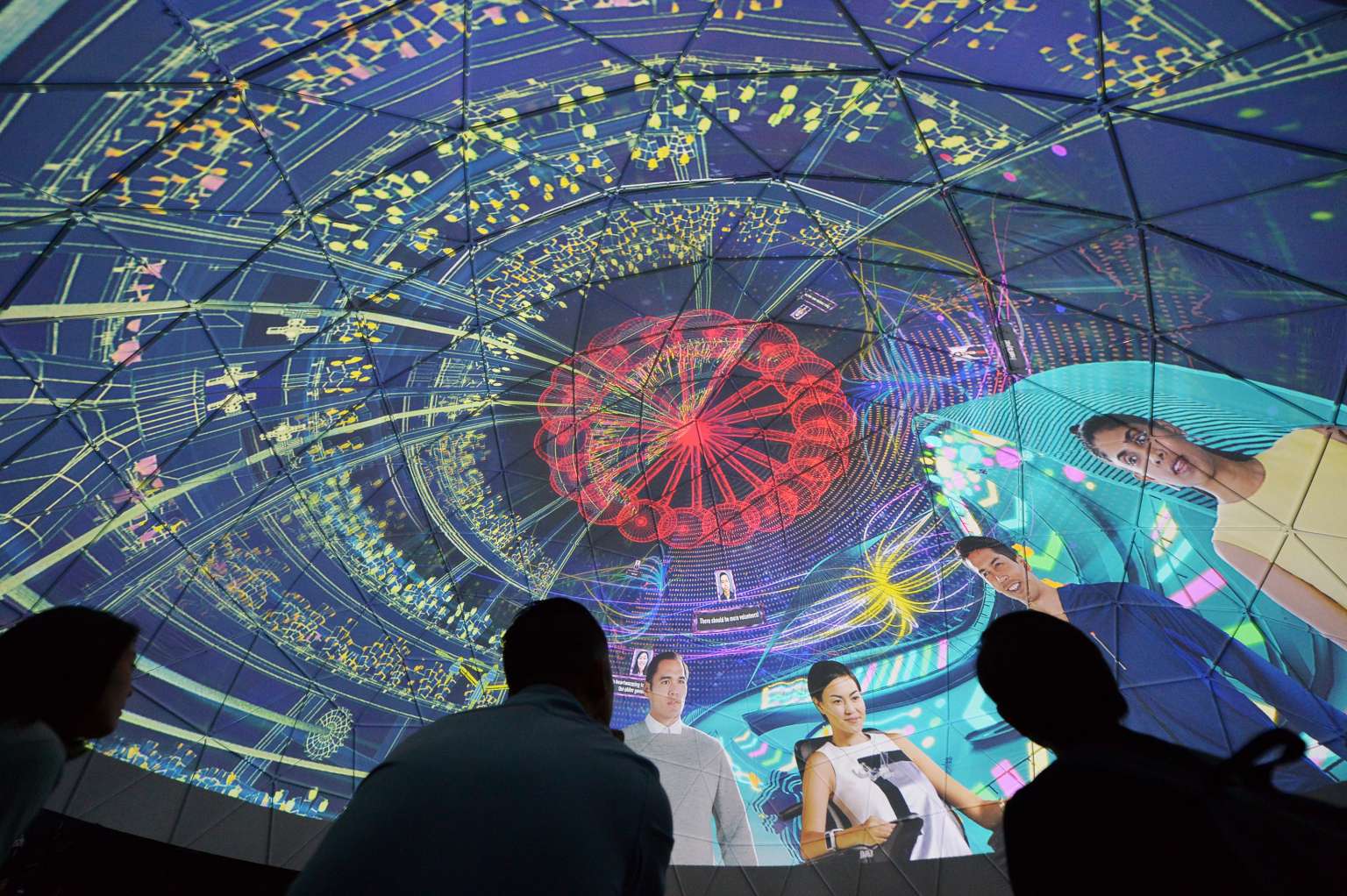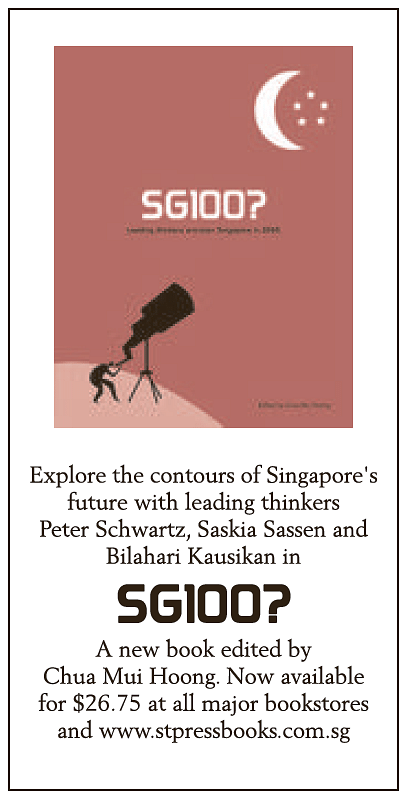The Future of Singapore is here and it looks awesome
Sign up now: Get ST's newsletters delivered to your inbox

Images projected on a screen at The Future Of Us exhibition at Gardens by the Bay on Nov 24, 2015.
PHOTO: ST FILE
Follow topic:
Driverless cars. 3D printed organs. Your waste, analysed. Your breakfast, customised to suit your gut flora.
Oh, and more political parties to suit your values.
This is the vision of Singapore in 2065 offered by a new book from leading thinkers on what Singapore might look like, 50 years hence.
Titled SG100? Leading Thinkers envision Singapore in 2065, the book is a compilation of 20 essays that first appeared in The Straits Times Opinion pages last year. They were published from May to Sept 2015, as part of a special series in collaboration with port operator PSA.
Last year saw the nation galvanised in a year-long celebration of its 50th year of independence - and a period of mourning and reflection when founding Prime Minister Lee Kuan Yew died on March 23. A General Election in September that returned the ruling People's Action Party with a 10-percentage point increase in vote share, rounded off an intense year.

This year, attention turns, rightly, to the future. Where will we be in SG100? What is needed to bring us from here, to there? Can we sustain our economic success? Cohere as a society? Navigate big power rivalries?
A Committee on the Future Economy has been set up. A series of dialogues around the theme SGfutures are being held to tap citizens' views on what kind of future we want for the country, and to articulate what we all need to do collectively to create that future. Meanwhile, a Future of Us exhibition showcases what the future might look like.
As the person who commissioned and edited the 20 essays published in this new book, I can say - if you will grant me the poetic license to do so - that I have seen the future of Singapore and it is pretty awesome.
As the essays in the new book show, driverless cars abound in several visions of the future.
There are also climate-controlled domes. And with climate change and global warming a real threat to the survival of an island nation, some writers envision dykes to keep rises in sea levels at bay.
Then there are the weird and wonderful things described by scientists and engineers actively researching these things in Singapore. Many of the essayists in this series are folks who head or work in research labs or academic institutions in Singapore.
For example, we have all heard about the "Smart Nation" initiative. But did you know there's also "smart sewage" that can sample and analyse your waste water? And that you can have a system that tracks waste and notify authorities of impending diseases outbreaks.
That's what Carlo Ratti and Matthew Claudel, from the Senseable City Laboratory at the Massachusetts Institute of Technology (MIT), wrote about in their fascinating essay. The duo have been involved in a project in Singapore for over five years. When they say something is possible in the "near future", you know it will happen.
Like when they say the day is coming when every component of every gadget you have is tagged, and when a gadget breaks down, its parts can be taken apart, tracked, and re-assembled into another device. That gives a whole new meaning to "recycling".
The book also carry essays from A*STAR scientists who imagine a future full of promise.
For David Lane, Singapore in 2065 is a leader in the field of bioengineered wellness.
Imagine personalised molecular medicine, created to fit your body's biochemistry.
Imagine waking up to a breakfast of just the right mix of gut flora to maximise health (and engineered to taste delicious of course).
A*Star chairman Lim Chuan Poh sums up Singapore's various initiatives in the final essay for the book. He explains why the Smart Nation initiative is such a big deal.
Thousands of sensors are embedded into Singapore's urban infrastructure. Think of sensors in transport systems that give real-time updates on traffic congestion. Sensors that tell you where carparks are, and if there are empty lots available as you approach.
In new Housing Board flats, smart devices optimise lighting, irrigation and waste removal systems.
The applications are endless.
In another sphere, 3D printing guru Prof Chua Chee Kai explains the potential of this promising method of what is also called "additive manufacturing". His research students already print food like chocolate. If you can print beef slices one day, do you still needs cows?
And just contemplate the potential unleashed by 3D printed organs.
For Chia Yong Yong, Singapore's first disabled MP, the hope is that technology will help the disabled overcome physical and sensory obstacles, to become truly inclusive.
Oh, and the political party?
That's in the essay by Donald Low, on the future of (primal) politics in Singapore. He argues that conflict between values systems will become more common, and that political parties will rise to represent people who believe in these values.
You can also find Ho Kwon Ping's views on whether Singapore will have a two-party system in the book; read about Wang Gungwu's take on Singapore's "Chinese dilemma", and see what Tommy Koh wrote to his grandchildren in 2065.
And there's Bilahari Kausikan on big power rivalry; and Farish A. Noor and Parag Khanna on the need for Singapore to go regional and adopt a more pan-Asian or Southeast Asian identity.
Leading global thinkers like Peter Schwartz (The Art of the Long View) and Saskia Sassen (The Global City) also wrote thoughtfully of Singapore's future.
The thing about the future is, it's not something out there, far away.
The future begins here and now. The future is here, in the many projects happening all over this forward-looking island. The future is being co-created by us.
You can touch it, see it, feel it.
At the very least, you can certainly read about it.
muihoong@sph.com.sg

